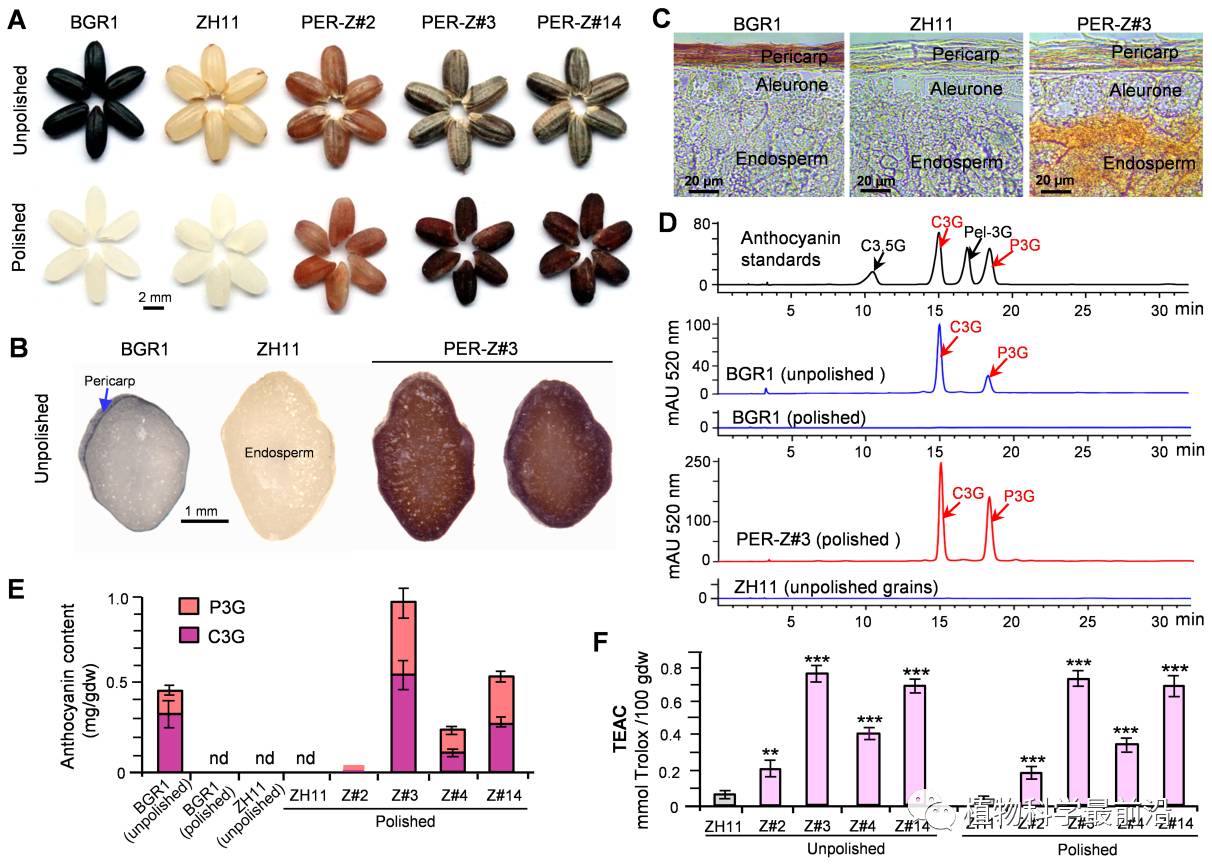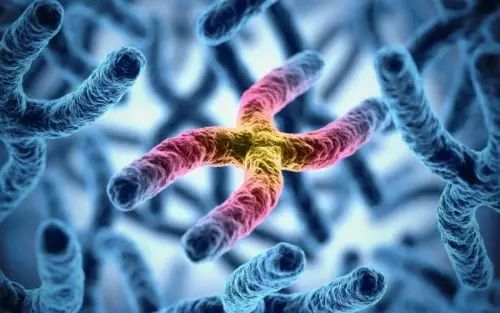
华南农业大学开发多基因工程新工具并创造出首例胚乳富含花青素的水稻新种质
近日,华南农业大学生命科学学院、亚热带农业生物资源保护与利用国家重点实验室刘耀光团队在Molecular Plant在线发表了题为Development of “Purple Endosperm Rice” by Engineering Anthocyanin Biosynthesis in the Endosperm with a High-Efficiency Transgene Stacking System的研究论文(doi: http://dx.doi.org/10.1016/j.molp.2017.05.008),并被选为封面文章。该研究利用Cre/loxP重组系统和新创建的不可逆重组的突变loxP位点,开发了新一代的高效多基因载体系统TGS II(TransGene Stacking II)。通过使用该系统,成功把花青素合成相关的8个关键基因转入水稻,实现了在水稻胚乳特异合成花青素的目标,创造出首例胚乳富含花青素的“紫晶米”水稻新种质。
Figure 4. Anthocyanin Production in the Rice Endosperm.
如何更加简单、高效地实现多基因组装与转化(Transgene Stacking),一直是植物合成生物学、代谢工程以及涉及多基因的重要农艺性状的改良等生物技术领域的一个急需解决的难题。花青素(Anthocyanin)是一类具有强抗氧化活性的黄酮类植物色素,作为植物营养素,对人体健康具有重要的保健作用。天然的有色类谷物的花青素等色素只存在于种皮中,作为主要食用部分的胚乳不含花青素。如传统食用的黑米是糙米(种皮含花青素),其蒸煮特性和口感较差。因此,通过基因工程技术进行营养强化(Biofortification),在水稻胚乳合成花青素,是功能型水稻育种的重要目标。但由于花青素生物合成涉及多个基因,其代谢调控十分复杂,以及多基因操作的技术瓶颈,相关工作多年来未获得成功。
为了解决多基因工程技术的难题,刘耀光科研团队开发了新一代高效、简便的多基因载体系统TGS II(TransGene Stacking II),可实现多基因的高效快速组装和多个基因同时转化植物的目的。针对在水稻胚乳产生花青素的育种难题,该团队通过分析水稻品种花青素合成相关基因的序列和表达,发现白米品种水稻中存在多个调节基因和结构基因的功能缺失,以及其它相关基因在胚乳中的不表达或低表达状态。在此基础上,他们采用TGS II载体系统同时导入转录因子组合和整套结构基因组合的新策略,构建了一个具有10个基因的多基因载体,包括用于胚乳特异合成花青素的8个基因(由不同的胚乳特异启动子控制)以及2个筛选标记和标记删除的基因。通过农杆菌介导的遗传转化,在粳稻和籼稻中实现了花青素在胚乳的特异合成,首次创造出具有高抗氧化活性的紫色胚乳水稻“紫晶米”。
上述研究成果为合成生物学、复杂代谢途径的基因工程、和复杂农艺性状的遗传改良等提供了高效的技术平台。“紫晶米”新种质的成功培育,表明高效多基因载体系统TGS II的切实可行和广阔的应用前景,为谷物营养强化和功能型谷物育种提供了新的思路。
祝钦泷副研究员为论文第一作者,刘耀光研究员为论文通讯作者。该研究得到国家自然科学基金、农业部转基因专项和广东省公益与能力建设项目的资助。
Anthocyanins have high antioxidant activities, and engineering of anthocyanin biosynthesis in staple crops, such as rice (Oryza sativa L.), could provide health-promoting foods for improving human health. However, engineering metabolic pathways for biofortification remains difficult, and previous attempts to engineer anthocyanin production in rice endosperm failed because of the sophisticated genetic regulatory network of its biosynthetic pathway. In this study, we developed a high-efficiency vector system for transgene stacking and used it to engineer anthocyanin biosynthesis in rice endosperm. We made a construct containing eight anthocyanin-related genes (two regulatory genes from maize and six structural genes from Coleus) driven by the endosperm-specific promoters, plus a selectable marker and a gene for marker excision. Transformation of rice with this construct generated a novel biofortified germplasm“Purple Endosperm Rice”(called“Zijingmi”in Chinese), which has high anthocyanin contents and antioxidant activity in the endosperm. This anthocyanin production results from expression of the transgenes and the resulting activation (or enhancement) of expression of 13 endogenous anthocyanin biosynthesis genes that are silenced or expressed at low levels in wild-type rice endosperm. This study provides an efficient, versatile toolkit for transgene stacking and demonstrates its use for successful engineering of a sophisticated biological pathway, suggesting the potential utility of this toolkit for synthetic biology and improvement of agronomic traits in plants.











